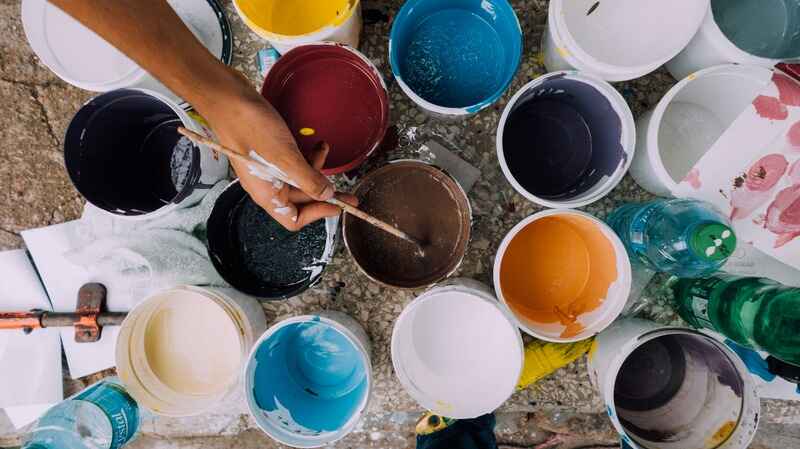Art collecting is not just about passion; it’s also about value. Whether you are a seasoned collector or new to the art world, understanding the value of your collection is crucial. Art appraisal is the process of assessing the worth of artworks based on various factors such as the artist, condition, provenance, and market trends. This article will explore the essentials of art appraisal, why it’s important, and how you can ensure the accuracy of your collection’s valuation.
What is Art Appraisal?
Art appraisal is the professional evaluation of an artwork’s value. It involves examining various elements, including the piece’s age, authenticity, condition, and market demand. The goal is to provide a fair market value, which can be used for sales, insurance, or tax purposes.
An art appraisal can vary greatly depending on the artwork. Paintings, sculptures, and even digital pieces require different considerations. Hiring a certified appraiser ensures a thorough, unbiased evaluation, giving you an accurate understanding of your collection’s worth.
The Importance of Regular Appraisal
Many collectors overlook the importance of regular art appraisal. However, it is a necessary step for anyone serious about their collection. Market values fluctuate, and an artwork’s worth can change over time. Regular appraisals ensure that you always have an up-to-date understanding of your collection’s value.
Accurate valuations are also crucial for insurance purposes. In the event of theft, damage, or loss, having an updated appraisal can simplify the claims process. Additionally, appraisals can help with estate planning, sales, and donations, ensuring you receive fair compensation or tax benefits.
Factors That Influence Appraisal Values
Several factors influence the appraisal value of an artwork. One of the most significant is the artist. Works by renowned or popular artists tend to have higher value. Emerging artists can also attract high valuations if there is growing interest in their work.
The condition of the piece is another critical factor. Damaged or poorly restored artworks usually receive lower appraisals. Conversely, pieces that have been well-preserved often see higher valuations. Provenance, or the history of ownership, also plays a significant role. Works with a documented history of previous owners, exhibitions, or publications are generally more valuable.
Market demand is another key factor. Art movements go through cycles of popularity, and this can affect how much collectors are willing to pay. Keeping an eye on market trends can help collectors anticipate changes in value and make informed decisions about buying or selling.
Art Appraisal for Insurance and Legal Purposes
Insurance is one of the most common reasons for seeking an art appraisal. Accurate valuations ensure that you receive proper compensation if your artwork is lost, stolen, or damaged. Insurers require a professional appraisal to determine the coverage amount for each piece in your collection.
Legal situations, such as inheritance disputes, divorce settlements, and charitable donations, may also require an art appraisal. In these cases, a certified appraiser can provide a clear, unbiased evaluation to help resolve financial matters. Accurate appraisals ensure that all parties receive fair value based on the current market.
The Process of Getting an Art Appraisal
The art appraisal process begins with selecting a qualified appraiser. Look for professionals who are certified by reputable organizations, such as the International Society of Appraisers (ISA) or the Appraisers Association of America (AAA). Certification ensures that the appraiser follows industry standards and ethical guidelines.
Once you’ve chosen an appraiser, they will begin by inspecting the artwork. This may involve examining the piece’s physical attributes, such as size, medium, and condition. They will also research the artist, style, and historical context to determine how these factors affect the value. After gathering all relevant information, the appraiser will provide a detailed report, which includes the estimated value and reasons for the assessment.
Art Appraisal Reports: What to Expect
An art appraisal report is a comprehensive document that outlines the appraiser’s findings. It usually includes a description of the artwork, details about the artist, and information about the piece’s condition and provenance. The report will also specify the type of value assigned, whether it’s fair market value, replacement value, or liquidation value.
Fair market value reflects the price that a willing buyer would pay a willing seller. Replacement value is the cost to replace the artwork if it were lost or damaged. Liquidation value is often lower and applies to forced sales, such as auctions or bankruptcy cases. Understanding these distinctions is important, as the purpose of the appraisal will determine which value type is used.
Why You Should Update Your Art Appraisal Regularly
The art market is dynamic, and values can change significantly over time. Trends, economic conditions, and changes in the artist’s reputation can all affect the worth of an artwork. This is why it’s important to update your art appraisal regularly, ideally every two to five years.
Regular updates ensure that your collection’s valuation reflects the current market. This can be particularly beneficial for insurance purposes, as under-insuring or over-insuring your collection can lead to complications in the event of a claim. For collectors who actively buy and sell art, staying updated on valuations allows for better decision-making regarding acquisitions and sales.
How to Choose the Right Art Appraiser
Selecting the right appraiser is crucial to obtaining an accurate valuation. Look for appraisers with certifications from recognized organizations, as these professionals adhere to strict standards. Experience matters too; an appraiser with a deep understanding of art history and the market will likely provide more accurate assessments.
Transparency is another key factor. A reputable appraiser should be willing to explain their process and provide references. Be cautious of appraisers who guarantee high values or charge a percentage of the artwork’s value as their fee, as this can lead to biased evaluations.
Art Appraisal for Resale and Auction Planning
If you’re planning to sell your artwork, getting an appraisal can help set realistic price expectations. Art appraisal gives you a clear understanding of what your piece might fetch in the current market. This is particularly useful if you plan to sell through an auction house, where accurate pricing can attract more bidders.
Auction houses often require appraisals before they agree to list a piece. Having a recent, detailed appraisal can speed up the process, making it easier to negotiate terms and decide on a reserve price. By understanding the fair market value, collectors can avoid undervaluing or overpricing their artwork.
The Role of Technology in Modern Art Appraisal
Advancements in technology have transformed many aspects of the art world, including art appraisal. Today, digital tools and databases allow appraisers to access historical sales data, artist biographies, and market trends more efficiently. These resources can lead to more precise and well-researched appraisals.
Some companies have even developed AI-based tools to assist with preliminary valuations. While these tools can be helpful, they should not replace the expertise of a qualified appraiser. Instead, they serve as a supplement, providing additional data to support the appraisal process. For collectors, these technological advancements mean faster, more accurate evaluations.
Conclusion: The Value of Accurate Art Appraisal
Art appraisal is an essential part of managing and protecting your collection. Whether for insurance, resale, or legal purposes, an accurate valuation provides clarity and peace of mind. By understanding the factors that influence an artwork’s value, collectors can make more informed decisions and maximize the potential of their collections.
Regular appraisals, conducted by certified professionals, ensure that you always have an accurate picture of your collection’s worth. As the art market continues to evolve, staying informed about changes in value can help you protect your investment and plan for the future. With the right approach, art appraisal can be a valuable tool for both new and seasoned collectors.


